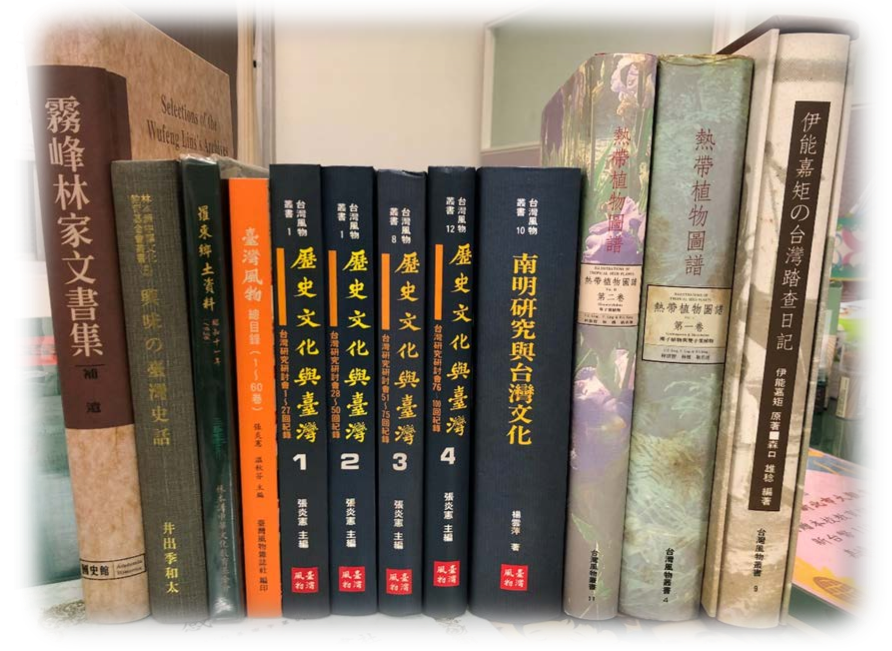
台灣的近代化
The modernization of Taiwan
林呈蓉教授/April C. J. Lin, Professor,
(淡江大學歷史系/(Department of History Tamkang University)
2001-03-12

Taiwanese sugar factory before modernization, photo courtesy of SMC Publishing Inc.
若要形容台灣在日本帝國統治下的時代特質,那應該就是「近代化」了。日本統治下的遺產即使在戰後的五○、六○年代,對台灣經濟的助益亦是不可抹滅的。無可諱言地,日本帝國在台灣所奠定的近代化基礎,基本上完全是為了配合其帝國內部資本主義發展的需求所設計,但是如果台灣史上欠缺了這一段歷史經驗,把今天的台灣社會與中國治下的海南島相比,恐怕也無出其右了。本週請到淡江大學歷史系林呈蓉教授執筆,談談台灣在日本殖民政權統治下的近代化歷史發展概況,談談後籐新平如何奠定台灣工業發展的基礎。
If you want to describe Taiwan’s distinguishingcharacteristics under the Japanese occupation,the word has to be “modernization.” The legacyof the Japanese occupation, even in thepost-war period of the 1950s and 1960s, wasindelible, and greatly helped Taiwan’s economy. There’s no hiding the fact that the foundationsof modernization that the Japanese Empire laidin Taiwan were fundamentally there to tie inwith Japan’s domestic capitalist developmentneeds, but if Taiwan had not had this historicexperience, there would be no differencebetween Taiwan society today and Hainan Island,which is under Chinese rule. This week, we haveinvited Professor April C. J. Lin from theDepartment of History at Tamkang University towrite a piece on the modernization andhistorical development of Taiwan under Japanesecolonial rule, and to talk about how GotoShimpei was able to establish the foundationsof Taiwan’s industrial development.
每一時期皆有不同的時代特質
台灣短短的四百年歷史過程中,易幟五次。近代政府組織的首次出現,始於17世紀初的荷蘭統治時期,其後經歷了明鄭統治時期、清王朝統治時期、日本帝國統治時期、中華民國統治時期、直至現在。由於政權不斷更迭,台灣四百年歷史的每一個時期,都發展出不同的時代特質。以日本帝國統治時期為例,如果想以一個簡單的語詞來說明此一時代的特質,那應該就是「近代化」。
Each period has its own particular characteristics
In the short 400 years of Taiwanese history, therehave been five changes of rule. The moderngovernment structure first appeared at thebeginning of the seventeenth century, in theperiod of Dutch rule, then came the era of Koxingaand his son, then the Qing Dynasty, Japaneseimperial rule, and the Republic of China, whichbrings us up to the present day. Due to the constantchanges in power, each period in Taiwan’s 400years of history has developed its own uniqueperiod characteristics. To take the example of theJapanese imperial era, a simple word to explainthe characteristics of this period would have to be”modernization.”
 Taiwanese sugar factory aftermodernization, photo courtesyof SMC Publishing Inc.
Taiwanese sugar factory aftermodernization, photo courtesyof SMC Publishing Inc.
一度成為燙手山芋
1895年6 月,日本根據清日戰爭後雙方簽訂的馬關條約內容,獲得了包括澎湖群島在內的台灣新領地。然而,至少在1895年6月至1898年3月期間,文明未開的台灣對日本帝國而言,竟成為一塊燙手山芋。
Not something that Japan wanted to touch
In June 1865, Japan took the territory ofTaiwan, including the Pescadores, in accordancewith the Treaty of Shimonoseki after theSino-Japanese War. However, at least betweenJune 1895 and March 1898, the uncivilized landsof Taiwan were not actually something that Japanwanted to touch.
各種風土病肆虐
由於缺乏近代教育機制的洗禮,多數的民眾仍是文盲,民智程度偏低;這裡的風土民情與日本迥異;在過去清朝接近兩百一十二年的統治期間,社會公權力不張,導致民風強悍,管理不易;再加上氣候溼熱,衛生環境不佳,風土病到處肆虐。打開當時的報紙「台灣日日新報」,在日本帝國統治初期的五年間,各種風土病肆虐的紀事隨處可見。
All kinds of local sicknesses rampant
The majority of the population was still illiterate,because there was no modern education system, andthe cultural level was fairly low. The local peoplewere very different from the Japanese in theirculture and situation; in almost 212 years of QingDynasty rule, social and public authority had notspread, with the result that folk customs still heldsway and government was not easy. On top of this,the climate was hot and humid, sanitation wasprimitive, and local diseases were rampant. Open anewspaper from the first five years of Japanese rule,the “Taiwan Daily News,” and you will find recordsof the virulent local diseases everywhere.
曾一度提出「台灣賣卻論」
對台灣的經營統治,在諸多不順遂的情況下,日本帝國議會中曾有人提出「台灣賣卻論」的想法,主張以當時的錢一億日元將這塊新領地轉賣給對台灣情有獨鍾的法國。不過,這個提案並沒有被議會所接受。
“Taiwan Baikyaku Ron”
As for managing rule of Taiwan, since thecircumstances were not all that smooth, somebodyin the Japanese Imperial Diet came up with theidea of “Taiwan Baikyaku Ron,” which advocatedselling this territory to France, who had aparticular interest, for 100 million yen. However,this proposal was not accepted by the Diet.
採「漸進同化」的作法
1898年3 月,兒玉源太郎接任第四任總督之後,整個情況開始有了改變。因為他啟用了一位有醫學背景的後籐新平來擔任台灣的民政長官。後籐氏本著「生物學的殖民地經營」原則,開始在台灣奠定各項近代化建設的基礎。所謂「生物學的殖民地經營」,依照後籐氏的說法,他認為就像是把鯛魚的眼睛移植到比目魚身上一樣,是一件何其不自然的事!如果把日本帝國現行的各種制度直接移植到尚未受過近代文明洗禮的台灣社會,勢必會帶來許多無謂的誤解與衝突。對台灣的經營,後籐氏主張「漸進同化」的作法,也為長久以來在台灣統治基本政策上「內地延長主義(同化政策)」、「特殊統治主義(非同化政策)」的爭議暫時劃上了休止符。
Choosing a process of “gradual assimilation”
In March 1898, after Kodama Gentaro tookoffice as the fourth governor of Taiwan,everything began to change. Kodama appointedGoto Shimpei, who had a background of medicaltraining, as the chief civil administrator ofTaiwan. Goto based his work on “ColonialManagement based on Biological Principles,” andbegan to establish the foundations of modernconstruction in Taiwan. Goto’s “ColonialManagement based on Biological Principles” werebased on his belief that [trying to rule Taiwanalong Japanese lines] was like transplantingthe eyes of a bream onto a flatfish, completelyunnatural! If all the systems and institutionsin use at that time in Japan were to be directlytransplanted to unmodernized and uncivilizedTaiwan, they would certainly bring unwarrantedmisunderstandings and clashes. For governingTaiwan, Goto advocated a process of “gradualassimilation,” and also temporarily terminatedthe long-running debate between the twoapproaches of basic policy, “interior expansionism(assimilation policy),” and “special government(non-assimilation policy).”
 Goto Shimpei, the TaiwanGovernor’s Chief CivilAdministrator, who took officein March 1898.
Goto Shimpei, the TaiwanGovernor’s Chief CivilAdministrator, who took officein March 1898.
後籐新平的新政
後籐新平從1898年3 月到1906年11月,長達八年的民政長官任職期間,從衛生環境的整備開始,推動各項調查事業;統一幣制以促進金融與商業的流通;通設與擴充各種交通運輸事業;開發水力與火力發電廠,以奠定台灣發展工業的動力基礎;並從品種改良開始,重振台灣重要的米糖產業。
The appointment of Goto Shimpei
Goto Shimpei spent eight years as chief civiladministrator, from March 1898 to November1906. Starting from hygiene and health, headvanced all kinds of investigative work; hecreated a unified monetary system by whichpromoted financial and commercial exchange;he carried out construction and expansion ofall kinds of communications and transportationenterprises; he developed hydro- andthermoelectric power plants in order toestablish the power resource foundations forTaiwan’s development of industry; and startingwith the improvement of rice and sugar strains,he revitalized Taiwan’s rice and sugarindustries.
台灣的近代化幾乎與日本同步
必須一提的是,台灣的近代化經驗幾乎是在與日本同步進行的情況之下,發展起來的。日本的近代化經驗始於1868年「明治維新」時期,主要的兩大訴求則在於「殖產興業」與「富國強兵」。然而,直至1877年以前,帝國政府一直忙於平息國內不滿勢力所醞釀出來的武力蜂起,整個近代化事業真正開始落實則是在這些武力衝突完全停止之後。其後不久的1895年,日本隨即獲得台灣新領地,由此可以推知日本帝國本身的近代化步伐並沒有比台灣快多少。對於以西方文化為主體的近代文明,在許多時候日本的執政當局也仍在學習摸索中。因此,有些時候台灣也成了日本在近代文明發展過程中一個重要的實驗場。
Taiwan’s modernization advanced almost in stepwith that of Japan
Something which must be mentioned is thatTaiwan’s experience of modernization went verynearly hand in hand with that of Japan as itdeveloped. Japan’s modernization experiencestarted in 1868 with the Meiji Restoration, andthe two major ideas were “colonization andindustry” and “rich country, strong army.”However, before 1877, the imperial governmentwas busy with quelling armed uprisings brewedby dissatisfied forces within Japan, and thereal modernization only began to be implementedgenuinely after these armed clashes had beenstopped completely. Not long after, in 1895,Japan took its new territory of Taiwan. We caninfer from this that Japan’s own modernizationsteps were not that much faster than those ofTaiwan. As for the modern-day civilization whichtakes Western culture as its subject, on manyoccasions, Japanese administrative authoritieswere still studying and groping around for it.Consequently, sometimes Taiwan also became animportant testing ground for Japan’s process ofmodernization and cultural development.
實施戶口與國勢調查
以調查事業為例,除了土地調查、林野調查、台灣舊慣調查之外,日本帝國在台灣也實施了戶口調查與國勢調查。對於近代國家而言,為了有效掌握支配領域的各種情報料,統計調查事業的推動是非常重要的一項基礎工作。其中,國勢調查又位居各種統計調查事業之根本。然而,日本帝國本身最早施行國勢調查是在1920年,而台灣則早在1905年便已經完成了第一次的國勢調查作業。由於當時日本的國家政治指導者對於國勢調查事業欠缺正確的認知,導致帝國內部的國勢調查事業起步較新領地台灣遲了十年。主要的因素在於這些政治指導者無法清楚分辨出戶口調查與國勢調查的異同處,自然不願意為國勢調查事業提撥預算。因此,1905年在台灣初次實施國勢調查事業時,是以「第一次臨時台灣戶口調查」的名目闖關;而1915年則是以「第二次臨時台灣戶口調查」為名,推動國勢調查作業。事實上,國勢調查正確的譯法應該是「人口調查」,從事調查事業的統計學者則以「國勢調查」的名義強調,「POPULATIONCENSUS」所含括的範圍除了人口學之外,還包括產業調查、經營調查等各個層面,自然而然地給予外界有「國富」調查的印象,再加上歐美列強也實施這種的政策,是日本想成為「文明國」所應必備的要件之一。在統計學者不斷透過各種宣傳以及壓力團體的協助,終於在1920年說服了國家政治指導者施行國勢調查,台灣也得以與帝國內部同時以「國勢調查」名義,名符其實地繼續推動各種調查實務。
Implementing household registration andpopulation census
To take the investigative work as an example,apart from land and forestry surveys, andinvestigations into old customs in Taiwan, Japanimplemented a household registration system inTaiwan, and carried out a population census. Inorder to effectively grasp all sorts ofinformation and data about the territory whichthey ruled, the promotion of statistics andsurveying work was extremely important groundworkfor modern nations. The population census wasalso the base of all kinds of other statisticaland surveying work. However, Japan did not carryout a population census of itself until 1920,while Taiwan had finished the work for its firstpopulation census in 1905. Because those leadingdomestic politics in contemporary Japan lackedaccurate knowledge of the work involved in apopulation census, the census in Japan took offten years after that of Japan’s new territories.The major factor was that these political leaderswere unable to differentiate household registrationfrom a population census, and naturally they wereunwilling to put a budget aside for a populationcensus. Consequently, when the first populationcensus was carried out in Taiwan in 1905, it wasunder the name of “First Provisional TaiwanHousehold Registration Survey.” In 1915, populationcensus work was promoted under the name of “SecondProvisional Taiwan Household Registration Survey.”In fact, the population census was literallyentitled “survey of national strength,” and thestatisticians engaged in the survey used this titleto emphasize that the scope of a population censusgoes beyond mere population figures, includessurveys of industry, management and other levels,and as a matter of course gives the outside worldan impression of being a survey of “nationalwealth.” On top of this, the great powers of Europeand America were carrying out this kind of policytoo, and this was one of the important conditionsof Japan becoming a “civilized nation.” With theincessant propaganda of the statisticians and thehelp of pressure groups, in 1920 the politicalleaders of Japan were finally persuaded to carryout a population census, and Taiwan too, was ableto continue, with Japan, to promote all kinds ofsurvey work under the name of “survey of nationalstrength.”
上下水道工程建設
又以整備衛生環境的上下水道工程為例,從1895年底委託英國技師巴爾頓來台從事衛生工程建設計畫,至1898年時台北上水道工程事業已經竣工;在1905年時台灣已經有兩座自來水廠;到了1934年時自來水廠則已經增加至83座。事實上,台灣的上下水道工程建設,甚至領先日本帝國內部的部分城市。
Sewerage system construction
To take another example, this time of publicsanitation and the engineering work of thesewerage system, at the end of 1895, the Britishengineer W. K. Burton was commissioned withcarrying out a program of public sanitationengineering. By 1898, construction of the Taipeisewerage system had been completed. In 1905,Taiwan already had two public waterworks, andby 1934, this number had increased to 83. Infact, the construction of Taiwan’s seweragesystem predated that of many Japanese cities.
對台灣的經濟助益亦是不可抹滅
帝國政府在台灣領有初期,以每年七百萬日元的補助金支付給台灣總督府,原本預估十三年後台灣的財政應該可以獨立。然而,伴隨產業振興的順遂與公賣、地租收入的增加,在1905年台灣的財政已經可以獨立,甚至從兩年後的1907年開始,還可以回饋帝國政府。1935年10月台灣總督府曾舉辦過一次「台灣始政四十週年紀念的大博覽會」,至目前為止這個可謂「空前絕後」的博覽會,也是日本帝國在台灣近代化歷程上的一個成果報告。當時受到了包括中華民國國民黨政權在內之海內外各界的矚目,評價極高。事實上,日本統治下「殖民地近代化」的遺產即使在戰後的五○、六○年代,對台灣經濟的助益亦是不可抹滅的。
An undeniable help to Taiwan’s economy
At the beginning of its occupation of Taiwan,the imperial government provided the governorgeneral with subsidies of 7 million yen ayear, and originally calculated that after 30years, Taiwan’s public finances would be ableto be independent. However, in the wake ofthe smoothness of vigorous industrialdevelopment and increase in income fromgovernment monopolies and land tax, Taiwan’spublic finances became independent in 1905,and from 1907, a surplus could be returned tothe imperial government. In October 1935, thegovernor general of Taiwan held an “Expositionto Commemorate the 40th Anniversary of theBeginning of Administration in Taiwan,” anexposition which has remained unique andunrivaled to this day, and which served as areport on the achievements of Taiwan’smodernization process under Japanese rule. Itattracted attention from all over the world,including the Republic of China’s KMT regime,and was highly admired. In fact, the legacy”colonial modernization” under Japanese rulewas an undeniable help to the economy ofTaiwan until well into the 1950s and 1960s.
無可諱言地,日本帝國在台灣所奠定的近代化基礎,基本上完全是為了配合其帝國內部資本主義發展的需求所設計的,但是,如果台灣史上欠缺了這一段歷史經驗,把今天的台灣社會與中國治下的海南島相比,恐怕也無出其右了。
At the beginning of its occupation of Taiwan,There’s no hiding the fact that thefoundations of modernization establishedduring the Japanese imperial occupation ofTaiwan were basically meant to tie in withcapitalist development in Japan itself, butif Taiwan had not had this experience in itshistory, there would be precious littledifference today between Taiwan society andHainan Island, under Chinese rule.
Edited by Hsu, Shiou-Iuan/ translated by Elizabeth Hoile
(許琇媛編輯/何麗薩翻譯)









